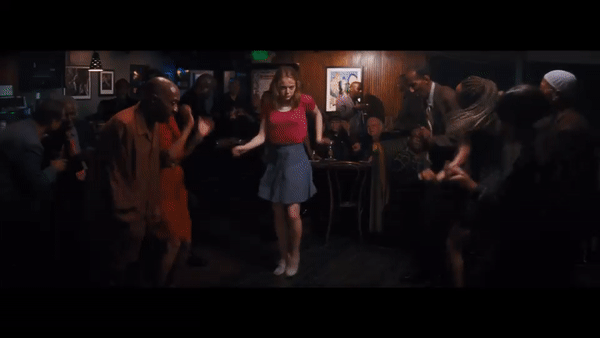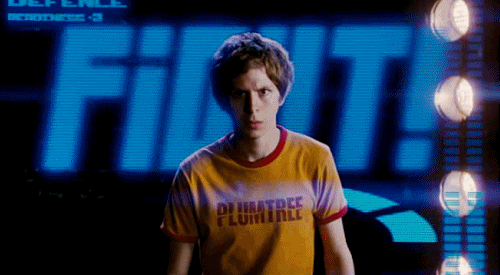| Name of Shot (Abbreviation) | Description of Shot in Relation to Subject | Use in Storytelling |
| Extreme Close-up (ECU) | Part of the face e.g. eyes takes up the frame | Gets inside the head of a character |
| Close up (CU) | Whole face takes up the frame | Reveals character’s emotional state |
| Medium Close- up (MCU) | Head and Shoulders in frame | Helps shows the subjects emotions while also showcasing the background |
| Low Angle Shot (LA)/ High Angle Shot (HA) | Used to make the audience look up/down to the characters | Makes the characters seem powerful/strong or weak/scared |
| Extreme Long Shot (ELS) | Only scenery visible can’t make out individual people | Used as an establishing shot |
| Medium Shot (MS) | One or two subjects in frame from waist height sometimes taken from “over the shoulder” of one of the characters (OSS) | Often used as a Master Shot/ Two Shot/Shot-Reverse for conversations |
| Pan/ Tilt | The camera turning round a character or a scene, horizontally (pan) vertically (tilt) | Mimics a static character looking round a scene |
| Track (on a dolly, steadicam or handheld) | Camera follows a subject by moving along with them | Used to show where the character is going brings audience along on a journey |
Daily Archives: October 1, 2021
Filters
Shot movements
Tracking Shot [Steadicam]: The camera follows the subject around the scene, usually keeping the camera still through the use of a Steadicam. A tracking shot is used in order to immerse the viewer in the scene, making them move with the character which allows them to watch the scene unfold at the same time as the scene’s subject.

Pan: The camera moves either left or right without changing it’s base position, revealing something previously off-screen. Pans can be used in a variety of ways as they can be used at different speeds, therefore changing the tone of the film. For example: A quick pan is often used for comedic affect or to emphasize what’s appearing on screen whilst a slow pan makes the scene look more dramatic as they drag out the reveal of whatever is going to appear instead of letting it flash on screen for a few seconds.

Zoom: The camera is focuses on a subject and either allows more of the background to be seen by changing from a close up into a long shot or, most commonly, focus on a characters facial expression by through the use of a long shot into a close up. A zoom can happen quickly in order to create a dramatic or comedic tone or can be dragged out, adding tension to the scene and slowing the pace.

Shot Angles, Movement and Types
Angles
Low angle
High angle
Overhead View
Dutch angle
Eye Level
Shoulder Level
Hip Level
Knee Level
Ground Level
Movement
Pan Left/Right
Crab Left/Right
Track In/Out
Ped Up/Down
Tilt Up/Down
Types
Extreme Close Up
Close Up
Medium Close Up
Master/Medium Shot
Medium Long Shot
Long Shot
Extreme Long Shot
